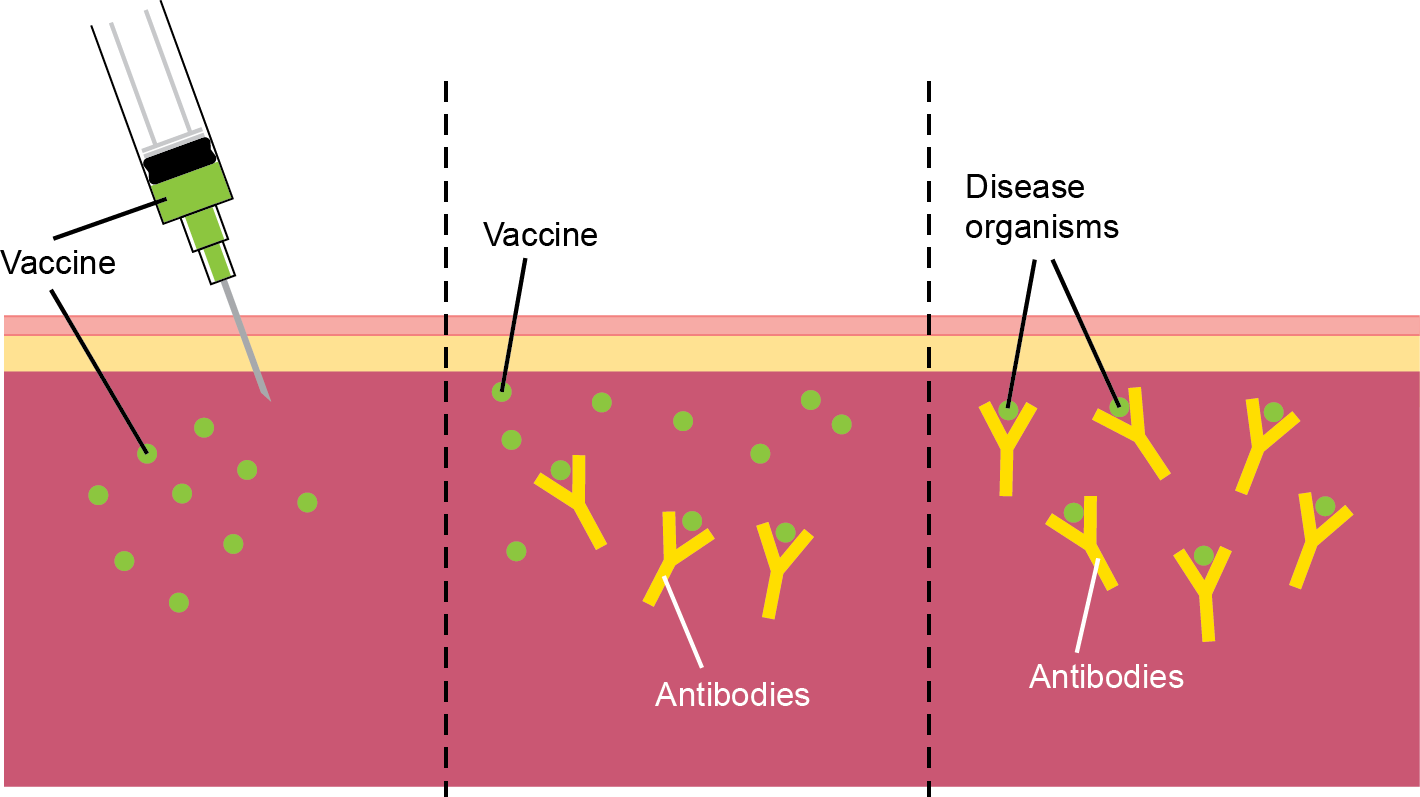Vaccines
2. Mode of Action
Microorganisms have unique patterns of molecules on their surface known as antigens, which are like fingerprints. The white blood cells in the body specifically recognise these antigens as ‘foreign’. This results in the activation of white blood cells to produce antibodies. Antibodies are specialised proteins that bind to the antigens on the surface of a microorganism, causing it to be attacked and destroyed by the rest of the body’s immune system.
Vaccines work by mimicking a particular disease. During vaccination, a modified form of a disease-causing microorganism or toxin, which does not have the capacity to grow or cause symptoms, is introduced into the body (Figure 1). The vaccine does, however, display the antigens that characterise a particular virus or bacterium. The immune system therefore responds in the same way that it would to the natural form of the disease-causing microorganism or toxin. It mounts a response and learns to recognise the antigens from the microorganisms within the vaccine, so that if the body is later infected with the active disease-causing microorganism it will identify it as being harmful and will act rapidly to destroy it.

Figure 1. Vaccine immunity. During vaccination, a vaccine with modified forms of viruses or bacteria is injected into the body (left). The vaccine stimulates the immune system to produce antibodies against the microorganism (centre). The immune system learns to recognise the microorganism, so that if the body is later infected with the live disease it will produce antibodies to attach to the microorganisms and stop the infection (right).
Most vaccines are used to prevent disease; however, some can be used to treat disease (known as therapeutic vaccines). For example, there is some evidence that the immune system can be harnessed to kill cancer cells. Tumour cells are derived from the body’s own cells, so under most circumstances the immune system does not see cancer cells as foreign and does not attack the tumour. Cancer vaccines aim to re-educate the immune cells so that they recognise tumour-specific molecules (called tumour antigens) in the same way that they recognise viruses or bacteria. One method under investigation is the use of tumour cells or tumour antigens in a vaccine, combined with a substance that enhances the immune response (an adjuvant) to stimulate the immune system and encourage it to see the tumour as foreign.